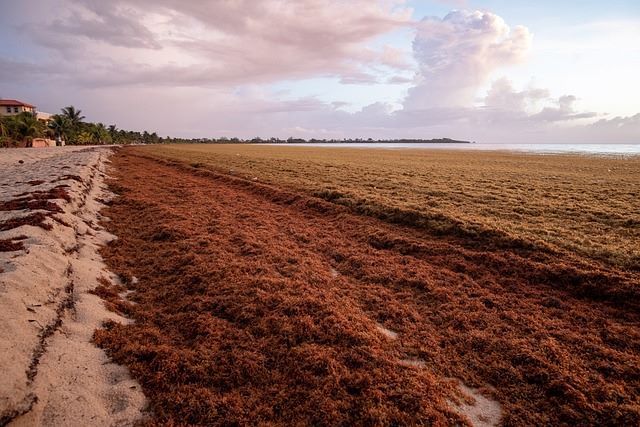Fito Energy: Turning Sargassum into Eco-Friendly Batteries
Learn about Fito Energy, a project that aims to convert sargassum into eco-friendly batteries. Discover how they use natural sugars in sargassum to create electrolytes and present a solution to the sargassum problem while also involving community participation and promoting green chemistry.

While the arrival of sargassum on the coasts of Puerto Rico and other parts of the world is a problem that could worsen this year, leaving millions of dollars in losses, an interdisciplinary group of students from the University of Puerto Rico (UPR) is working on a possible solution that would help in the management of these algae.
It is a project that uses the natural sugars in sargassum to convert them into electrolytes, which in turn act as energy conductors that can be used to power batteries similar to those used in watches.
The Fito Energy project, which involves students from the Río Piedras (UPR-RP) and Mayagüez (UPR-RUM) campuses, won a $5,000 grant after being ranked among the top 15 from a list of 64 research teams.
This coming April 14–16 in Colorado, Fito Energy researchers will present the proposal in the new round of the competition, where the federal Department of Energy will select the top five projects.
"The project aims to change something that has become a problem every year in Puerto Rico, which is the arrival of sargassum on the beaches and the lack of management or strategies to work with these waves of sargassum and turn them into something useful and functional," said Gilberto Ramos Rivera, the team captain and a doctoral student in chemical engineering at RUM.
Carolina Rojas Michea, a doctoral student of physical chemistry at UPR-RP, said they already have prototypes of these batteries, and although she described the process as "super arduous," she said it has the potential to change the batteries so that instead of a liquid substance -- which is also a dangerous acid -- they have solid matter inside, which is less harmful to the environment and fills them with satisfaction.
"We are giving us all to be among the winners," Rojas Michea said.
Efficient and Eco-Friendly Batteries with Community Involvement
Claudia Zuluaga Gómez, a doctoral student of chemical physics at UPR-RP, explained that one of the goals of the research is to make the solid electrolyte more efficient than existing batteries on the market and to make it last longer.
For Rojas Michea, part of the sargassum problem is due to the actions of industries, and the focus in this project must be in the direction of "green chemistry."
"We are living at a time when it has become urgent to change synthesis techniques, processing techniques, chemical processes, and the use of resources," she said.
The team includes a law student, Adriana Morera, who is in charge of training the group on the importance of involving communities and advising them on legal aspects and how to boost the possible commercialization of the product they are creating.
"It is important for them to know that they have the potential to develop a product that will benefit Puerto Rico and will benefit communities—such as fishermen—and, later on, it can even reach the whole world because we are studying different applications for the future. Right now we are creating a micro-currency, but eventually, it is expected to have larger applications. For example, today, electric cars use batteries, as do solar panels and solar systems, so the idea is that, eventually, larger batteries can be developed from this microcell,' she explained.
Fitoenergy: Pioneering Batteries for Future Generations
Zuluaga Gómez also expressed hope that they are laying the foundations for something that their grandchildren and future generations can use.
"How nice it would be to be able to use these batteries that we are pioneering today," he said.
Mentoring teacher Gerardo Morell said that if they achieve results with the prototype before April and can present it as a finished, working battery, they will be among the first three winning teams.
"I do not doubt that," he said.
Carlos Malca, a doctoral student in chemical physics at Rio Piedras who is trying to get stuff out of sargassum, and David Tatis, a master's student in programming and artificial intelligence, are also on the team. Tyanna Meléndez, a student in architecture, helped make the art and create the brand identity.
The group has accounts on the main social networks, such as @Fitoenergy, where they provide additional information about the project.
Full Citation: EL VOCERO, Istra Pacheco. “Posible SoluciÓN Al Problema Del Sargazo.” El Vocero De Puerto Rico, 13 Mar. 2023, www.elvocero.com/gobierno/agencias/posible-soluci-n-al-problema-del-sargazo/article_891ee6cc-c13f-11ed-b70b-036a3f686fa9.html.




